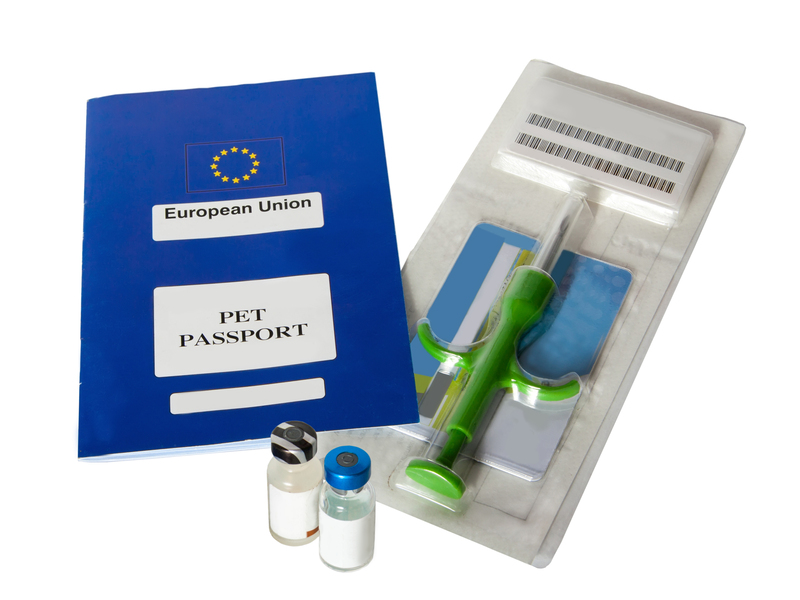Extend Your Sofa's Life: Expert Advice on Long-Term Storage
Posted on 22/05/2025
Extend Your Sofa's Life: Expert Advice on Long-Term Storage
Your sofa is more than just a piece of furniture--it's the heart of your living room, the hub of family gatherings, and a significant investment worth protecting. Whether you're planning a long vacation, relocating, or simply freed up space for renovations, proper sofa storage can make the difference between an inviting, supportive couch and a sagging mess. This comprehensive guide provides expert strategies and practical tips to extend your sofa's life during long-term storage, ensuring it remains fresh, comfortable, and ready for use when you need it again.
Why Proper Sofa Storage Matters
Many people underestimate the impact that prolonged disuse or inadequate storage conditions can have on sofas. Just like antiques or electronics, sofas require the right environment and care to maintain their longevity. Improper storage can lead to:
- Mold, mildew, and unpleasant odors
- Warped frames and cracked legs
- Faded fabric or leather
- Infestation by pests
- Stubborn dust and stains
By understanding how to store a sofa safely and strategically, you can avoid these common pitfalls and prolong your couch's lifespan for years of reliable use.

Before Storage: Preparation is Key
1. Thorough Cleaning: The First Step for Sofa Longevity
Cleaning your sofa is critical before storing it for months or years. Any crumbs, spills, or hidden debris can attract pests or become breeding grounds for mold in closed spaces. Here's how to prepare your sofa for long-term storage:
- Vacuum the entire surface using a brush attachment--including crevices, seams, and under cushions.
- Spot clean any stains with suitable fabric or leather cleaners. For fabric sofas, use a mild upholstery shampoo and avoid over-wetting; for leather, use a conditioner for protection.
- Allow the sofa to air dry completely to prevent moisture from getting trapped.
- If possible, remove detachable cushions and covers for separate cleaning and storage.
2. Disassemble and Label Parts
Larger sofas can often be partially disassembled. This makes them easier to transport, reduces stress on joints, and prevents accidental breakage:
- Detach legs, arms, and cushions according to the manufacturer's instructions.
- Wrap small components in bubble wrap or cloth and store them in clearly labeled bags.
- Keep all screws, bolts, and assembly hardware in a clearly marked container.
Disassembling also allows for a more compact storage arrangement and minimizes pressure points on your sofa in storage.
3. Choose the Right Storage Location
Not all storage environments are sofa-friendly. Climate-controlled units are best for protecting upholstery (especially leather) from humidity and temperature fluctuations. When selecting a storage spot, look for:
- Cool, dry, and well-ventilated spaces.
- Protection from direct sunlight, which can cause fading and drying out of fabrics and leather.
- Limited risk of flooding or leaks.
- No signs of rodents or insect infestations.
Garage or basement storage is convenient, but only if humidity and pest problems are addressed.
How to Store Your Sofa for the Long-Term
1. Protect With Covers and Padding
Using the right coverings can make or break your sofa's post-storage condition. Ordinary plastic covers trap moisture and cause mildew; instead, opt for:
- Breathable, cotton-based sofa storage covers or furniture blankets.
- Bubble wrap for legs and delicate frame pieces.
- Loose padding to prevent pressure marks on arms and cushions.
The right cover shields the sofa from dust, scratches, accidental scrapes, and sunlight while allowing air circulation.
2. Elevate and Isolate
Floors, particularly in basements or garages, trap moisture that can soak into your sofa's legs and frame. Always:
- Raise your sofa off the ground with wooden pallets, blocks, or furniture risers.
- Place the sofa away from exterior walls to avoid condensation.
- Use dry silica gel packets or moisture absorbers underneath as extra insurance against humidity.
Elevating your couch in storage prevents pests from nesting beneath and keeps it dry.
3. Arrange Sofas Smartly in Storage
Never stack heavy boxes or sharp-edged objects on your sofa during storage. Even moderate pressure for long periods, especially on armrests or back cushions, causes warping and permanent indentations. Proper arrangement is crucial:
- Store the sofa flat in its natural position--not on the side or upside down.
- Leave a gap between the sofa and other stored items for air circulation.
- Keep cushions off the frame if removable--store them vertically to avoid flattening.
4. Pest and Odor Prevention
Long-term storage is also an invitation for pests and bad smells. Expert tips to safeguard your sofa during storage include:
- Place cedar blocks or lavender sachets inside cushion covers and around the sofa to deter moths and insects.
- Use fabric-friendly deodorizer packets to maintain a fresh scent.
- Avoid chemical mothballs, as their smell may be difficult to remove from upholstery.
- Inspect storage units for gaps or openings where pests might enter and seal them if possible.
Sofa Storage Mistakes to Avoid
Protect your valuable investment by avoiding these frequent sofa storage errors:
- Using tight plastic wrap or non-breathable covers (causes mold and trapping moisture).
- Storing on the floor or against exterior walls in damp areas.
- Piling boxes or objects on top of the sofa, risking permanent damage to frame and upholstery.
- Failing to clean and dry the sofa before placement, leading to stains or mildew.
- Neglecting monthly inspections for signs of pests, leaks, or odors.
Best Practices for Leather, Fabric, and Sectional Sofas
Leather Sofas
Leather requires special care to maintain its rich texture and avoid cracks or fading. Here's how to protect leather sofas in storage:
- Clean and condition leather with a specialist product before storage.
- Use a breathable cotton sofa cover to allow air circulation.
- Maintain stable temperatures--avoid hot or freezing environments.
- Check periodically and apply conditioner if storage lasts over 6 months.
Fabric Sofas
Fabric sofas are more vulnerable to humidity and pests. To keep fabric sofas safe during long-term storage:
- Ensure fabric is fully dry after cleaning before covering.
- Use insect deterrents like cedar oil sachets in and around the sofa.
- Cover with a thick, breathable cloth (never plastic) to avoid dust and mildew.
Sectional Sofas
Big, modular sectionals benefit from partial disassembly. If your sofa comes apart:
- Store sections upright or side by side, with padding between pieces to prevent scratches.
- Bag and label any removable hardware separately.
- Wrap corners with foam protectors for safe handling and storage.
Periodic Maintenance During Storage
Even the best-prepared sofa can deteriorate if neglected for years. For those planning to leave a sofa in storage for over 3 months, plan for occasional maintenance to further extend your sofa's life:
-
Check monthly or seasonally for:
- Moisture or water leaks
- Pest activity
- Odors or mustiness
- Adjust covers as needed to prevent trapping humidity.
- Rotate cushions or covers to keep fillings distributed.
- Reapply leather conditioner or deodorizer sachets every 6 months for optimal protection.
The Best Storage Units for Sofas
While home basements and garages may suffice in some cases, the ideal long-term sofa storage solution is a climate-controlled professional unit. Look for storage providers that offer:
- Temperature and humidity regulation
- CCTV and physical security
- Accessible yet protected environments
- Easy-to-navigate layouts to move large furniture safely
Though premium, these units significantly reduce risk factors that can age or damage your sofa prematurely (especially useful in high-humidity areas).

Reintroducing Your Sofa After Storage
Removing your sofa from storage is just as important as preparation. Follow these steps for a smooth transition:
- Uncover and inspect the entire sofa for signs of pests, mold, or damage.
- Thoroughly air out the sofa in a clean, dry area for at least 24 hours.
- Vacuum and spot-clean as needed to refresh upholstery.
- If you disassembled, reattach all parts following original assembly notes and labels.
- Apply fabric or leather conditioner to restore suppleness and sheen.
- Allow all covers and cushions to fully fluff up and reshape before regular use.
Conclusion: Make Your Sofa Last a Lifetime
Storing your sofa properly is an investment in comfort, style, and sustainability. Whether your couch is a family heirloom, designer piece, or simply beloved companion for movie nights, these expert long-term storage strategies will ensure it stays beautiful and functional for years to come. By taking the extra time to clean, prepare, store, and occasionally check on your sofa in long-term storage, you'll avoid the heartbreak and expense of damage and preserve your favorite furniture for the future.
Remember: A little prevention goes a long way when it comes to sofa care and storage. Give your sofa the attention it deserves and enjoy lasting comfort whenever you need it again.



